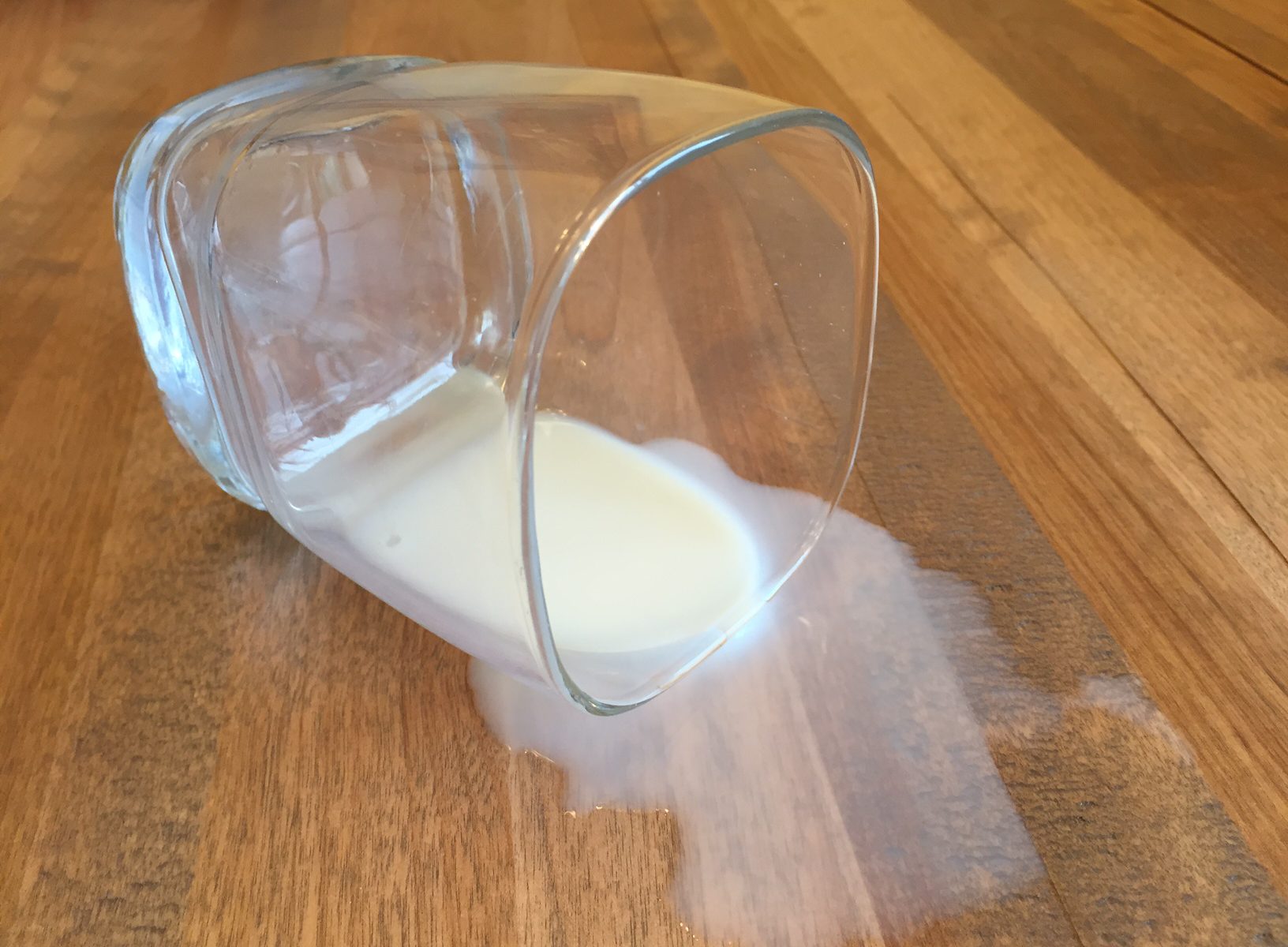Milk… “It’s essential for strong bones”, or is it?
Growing up in the seventies and eighties, I hated milk.
When I was two, my mother said she tried giving me some powdered milk and I was so disgusted that from that time on I refused to drink it at all.
My refusal to drink milk caused my mom a lot of stress.
The doctor reminded her I needed 3 glasses of milk a day to get the calcium I needed to grow and build strong bones. And dairy was a significant part of the four food groups after all!
So she did her best to get me to take it… in many different forms.
She put chocolate or strawberry powder in it (Quik… remember that?), she made sure I had it in my cereal every morning, she made pudding and grilled cheese sandwiches, she bought yogurt and even ice cream, all to try to get me to consume the calcium I needed.
Despite all that, I still didn’t come close to getting those 3 glasses a day. But I grew anyways. In fact I grew to be five inches taller than my mother.
How did that happen? Well, it wasn’t because of milk.
And when you think about it, isn’t it weird that we should rely on the milk of another species for our health? No other animals require the milk of another species to survive.
However, the importance of cow’s milk in our human diets continues to be pushed from all angles.
When I had my own children, the pediatrician lectured me on the importance of milk for my growing babies. But when my youngest daughter began to refuse milk, I started to research what alternatives I could give her instead.
And that research eventually led me to Walter Willett.
In 2012, I attended an event at McGill University where Dr. Walter Willett was featured as a guest speaker on the topic of nutrition. As a Professor of Epidemiology, Nutrition and Medicine at Harvard Medical School, he spoke about the latest research in food at how its affecting our health.
And what he said about milk and dairy really made an impact on me.
He said something to the effect that most populations of the world don’t consume milk, in fact many are even lactose intolerant, and their bones aren’t shattering.
That made so much sense to me.
At the time I was 40, and still standing tall, bones intact, despite the many years I consumed little or no milk, and barely any dairy.
It seemed to me that I was proof that milk wasn’t necessary for growing up strong.
What about calcium for preventing osteoporosis?
As I continued to dig into milk, I discovered that not only was milk consumption not necessary, but taken in large amounts it could actually lead to an INCREASED risk of fracture and osteoporosis later in life.
The nutrition director for the Physicians Committee for Responsible Medicine in Washington, D.C., Amy Lanou Ph.D., stated that:
“The countries with the highest rates of osteoporosis are the ones where people drink the most milk and have the most calcium in their diets. The connection between calcium consumption and bone health is actually very weak, and the connection between dairy consumption and bone health is almost nonexistent.”
In Canada, it’s suggested we take in 1000mg a day of calcium, and 1200mg a day once we reach age 50. In contrast, the World Health Organization (WHO) suggests 500mg as the amount we actually need each day as we age. That’s a big difference. And during that evening at McGill, Dr. Walter Willett agreed that we don’t need to take in all that calcium, and that 500mg is indeed enough.
The thing is that osteoporosis is not caused due to lack of calcium. Instead, “one of the primary causes of osteoporosis is the loss of calcium from bones to buffer acid loads in the body”. Check out this PN article for more on this subject.
Basically, our bodies like to maintain a slightly alkaline balance (that’s a pH slightly above 7, if you remember your high school chemistry). However, the diet that we eat here in the west, which is higher in sugar, processed foods, and animal products (such as meat and dairy) than most of the world, tends to be more on the acidic side.
When we have more acidity in the body, the body will take calcium and other minerals stored in the bones and other areas, to re-neutralize… hence, the prevalence of osteoporosis in this part of the world.
Plant-based foods, on the other hand, tend to have a more alkaline effect on the body and adding more of these foods will help balance the body’s pH.
So the key to preventing osteoporosis is NOT to add calcium, but instead to tip the balance of your diet in favor whole plant-based foods and away from processed and animal-based foods.
So if we know this, why do we continue pushing calcium, and in particular dairy?
Well, dairy is a HUGE part of our economy here in Canada.
According to a paper published in 2011, the Canadian dairy industry accounted for 215,000 direct and indirect jobs and brought in $15 billion of the GDP as well as $3 billion in tax revenue for municipal, provincial and federal governments.
With these kind of numbers, despite the scientific evidence, milk will continue to be marketed here.
So the choice comes down to you.
What are the alternatives?
Besides milk and dairy, there are plenty of alternatives that will get you the calcium you need. In fact most whole foods have some amount of calcium in them.
One plant-based non-dairy food which is a very high source of calcium is tofu, which packs a whopping 430mg in just half a cup (to compare, one glass of cow’s milk has about 300mg). In addition, fortified soy milk and almond mild provide calcium comparable to cow’s milk.
Then there are the dark green vegetables which pack a lot of calcium such as collard greens, kale, spinach, edamame and to a lesser extent, broccoli and bok choy.
Dried figs, oranges, sesame seeds, and almonds are also significant sources of calcium. Not only are all these choices high in calcium, but they also offer all kinds of other benefits such as vitamins, minerals, proteins, and healthy fats.
All this being said…
So, all this being said, it’s not necessary to give up milk or dairy completely.
But it helps to be aware that there are alternatives, and that you can create a more alkaline environment, favorable to retaining your hard earned calcium, simply by adding more plant-based foods.
To help you out, I’ve created a Cheat Sheet that you can use as a handy reference to check the calcium content of some common plant-based foods. It also contains 20 awesome snack and meal ideas (including links to recipes!).
Just click on the link to download it.
And keep moving forward!
Debbie
P.S. It’s never too late to join in one of my classes! Just check out my classes here and hope to see you soon!




My dad has never been a milk drinker. A bit of milk in his coffee and that was it. Never ate yogurt either. He is now 86 but when he was in his mid to late 70ies he was told by doctors that he had bones of a healthy 50 year old. I myself have been drinking almond milk because I never did like the taste of cows milk.
Thanks again Debbie for a very interesting and informative article!
It’s so great to know that your dad is 86 and still sporting strong bones, Caroline! He’s an awesome example for us all.
Great post Deb! Really interesting because I don’t remember ever having a glass of milk! Very informative – loved it!
Thanks Leigh! Glad you found it informative 🙂